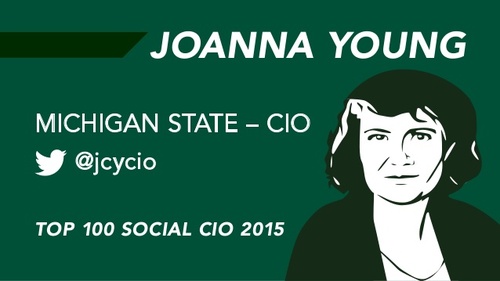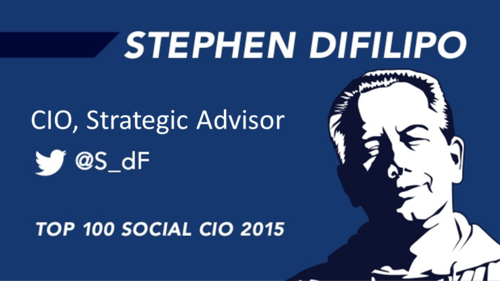Recently Educause, with help from IT Issues Panel and a representative sample of IT leaders in the community, published its top 10 priority list for CIOs. Educause notes that the people, processes and culture of higher education is not fully prepared to support new and developing technologies. In order to prepare, Educause advises CIOs to divest, reinvest and differentiate.
- Divest-- Higher education IT organizations are divesting of locally optimized and delivered technologies, architectures, and processes and moving to standardized, and cloud-based services and architectures.
- Reinvest-- Institutions are reinvesting in key areas to ensure readiness to manage a re-architected IT function and support mission differentiation with IT.
- Differentiate-- Colleges and universities are using IT as a strategic differentiator to enhance the institution's particular culture, missions, and strategies, particularly in analytics and in teaching and learning.
After reviewing the list, I asked two of the most respected, most social and innovative higher education CIOs, Joanna Young (@jcycio) and Stephen diFilipo (@S_dF) to review the top 10 list and provide their opinions.
Joanna Young is Michigan State University's Vice President for Information Technology and Chief Information Officer. Her information technology (IT) career includes over a decade in executive roles in higher education and insurance. As CIO for Michigan State University, Young provides strategic management and vision, guiding the future direction of IT in support of the administrative, academic, and research missions of MSU. Young is a frequent blogger and recognized at the most social CIOs on Twitter.
Stephen diFilipo is a strategic advisor for all things digital and former higher education CIO at MSOE Univeristy, Cecil College, and Glouceser County College. diFilipo is also recognized as one of the most social CIOs on Twitter.
The Educause 2016 Top 10 IT Issues: Here are Joanna Young (JY) and Stephen diFilipo (SdF) points of view:
1. Security
JY: Before I get going, this could be almost any top 10 list for CIOs; just substitute words like "student" with "customer" or "education" with "retail," "healthcare," or "financial services." Getting to security, in a word, yes. Security a priority in higher education is indicative of the reality of cyber security in 2016 exacerbated by the ongoing tension between institutional culture of openness and the need for standards and policies. Higher education CIOs and CISOs, who have to partner effectively, still have to influence individuals and departments to buy into common sense practices. Its funny, nobody argues against recycling, though suggest someone part with a 10+ year old server and a battle may ensue.. and these battles divert already constrained resources away from other priorities.
SdF: Security in Higher Education takes many forms. I want to focus on a high level view of security. I would suggest a 'security council', or some empowered group be convened to conduct a benchmarking assessment or maturity index assessment to determine the state of the organization against a national standard. From such an effort I would hope a role would be defined for a senior level position to be responsible for security (data, network, systems, etc.). Presumable a CISO (Chief Information Security Officer). That role should report to someone other than the CIO (Chief Information Officer). All activity related to securing what amounts to the true institutional assets will 'flow downhill' from there.
2. Optimizing educational technology
SdF: I struggle with the label 'edtech'. So much of the technology a traditional learner comes in contact with, beit in the classroom or elsewhere, originates from companies for whom education was not a design criteria. Focus on optimizing the learning experience first; add technology where it seems most appropriate. I agree with Joanna, optimizing technology begins with a UX/CX design standard that must include a transparent UI.
JY: I agree with Stephen - design the learning experience then figure out the tech. This is the same as with any business function - too often we jump to the technology without doing the hard work of design and requirements. Optimize to me means make it learner-centric and scalable, with an amazing UX. At MSU, we've got some very interesting and innovative projects going on ranging from a custom system to enable our new curriculum for the College of Human Medicine to CRM for our professional masters programs. The demand is through the roof .....
3. Student success technology
JY: We need to make student success boundary-less. Students should be able to seek experience and get credit via institutions, employers, even recreation. Credit scores aren't limited to or calculated differently based on financial institution; technology has enabled ubiquity. The same should be applied to student success. This is both exciting and terrifying for institutions, because it has the potential to disrupt, even eradicate, long-standing functions and processes, like registration. This disruption will happen one way or another.
SdF: The easy response here is, ditto what Joanna stated. Spot on! So, let's look at an example. Blockchain. Awarding some form of digital cryptography - let's call it an Edublock, similar in concept to Bitcoin - to each competency demonstrated by a learner and having that Edublock be in the possession of the learner, not the institution, eliminates in large part the need for the registrar. The learner can leverage their Edublocks in ways far beyond the reach and value of a credit hour. This enables a learner success story that empowers each learner at a personal and personalized level.
4. IT workforce
SdF: This one is easy. 25 years ago central or enterprise IT ruled the day. A gradual shift has occurred to a de-centralized IT workforce. With the move toward all-things-digital and the consumerization of technology every employee, and in the case of higher education every student, becomes a part of the 'IT workforce'. We are now in the age of the fourth industrial revolution which demands a distributed model of technology user/workforce.
JY: No talent, no technology - at least, not technology that will add value. Any organization that doesn't realize it is a digital organization is kidding itself. Digital is like brand; you have a presence whether you know it or not. Constituents see institutions through a digital lens. If you don't have the right talent to have a clear lens, you will slide towards obsolescence.
5. Institutional data management
JY: Data is forever. Applications are fleeting. Research institutions are in the business of developing, expanding, delivering and curating knowledge. Having a holistic, singular approach to data management is critical to growth and relevance. There is only upside to good data management: faster time-to-market on applications, predictive analytics, improved data hygiene, risk mitigation to name some.
SdF: To piggyback on Joanna's astute comment, data, particulalry 'mission critical' data is the true asset of a university. In this digital & data driven world the buildings are facades through which learning is transacted. If I have the universities core data structure I can operate the university from anywhere in the world. Which is one aspect that makes cloud computing and SaaS solutions so appealing. Distributed data. In fact there is a new model of data protection that requires a single database be segmented and each segment be located in unique environments and those segments are constantly in flux.
6. IT funding models
SdF: Here is where the CIO needs to understand the value of influence. Here is where the CIO's EQ becomes more important that their IT-IQ. Here is where political acumen and political capital (big 'P' and little 'p') is rewarded. In the context of institutional budget allocation the extent to which central IT projects are funded has very little to do with technical skills or knowledge.
JY: This needs to be in context of the funding and business model of the institution, and it needs to pay attention to culture. CIOs need to understand the written and unwritten rules of how money is allocated in order to influence prioritization towards the right technology commitments. Money is just a tool. Know how to make it work for you.
7. BI and analytics
JY: Big data is useless unless it is hygienic and organized. I see a lot of wasted investment on BI and analytics tools because data is fractured and messy. Better small, clean, good data than a big, bad mess. CIOs need to establish a clean data baseline first; this will allow faster innovation and iteration into quality BI and analytics.
SdF: Before the conversation about BI & analytics can begin there is a need to establish the data is authentic: has integrity, accuracy and is secure. If there is no enforceable data governance in place BI & analytics is...
8. Enterprise application integration
SdF: It's all about the API.
JY: Ditto, and the best integration in the world won't compensate for the automation of ineffective, inefficient business processes.
9. IT organizational development
JY: I'll repeat > no talent, no decent technology. Recruiting and retaining high-quality talent requires a contemporary organization. Characteristics include employee engagement, inclusion, compensation philosophy, collaboration and appropriate workspaces. We're competing with all verticals for IT talent; there has to be an employer brand and supporting environment. Higher education is disadvantaged because of salary constraints; however we have access to an amazing talent pool: students. It's a win/win to have students within IT; they get experience and we get the double benefit of talent and an inside track on customer feedback!
SdF: I have always been in the heavily populated urban Northeast. Two things to consider: competitive salaries and a plethora of talent. It is challenging to attract & retain high level skills at the typical university sub-industry standard pay scale. It would be a positive step if the university HR department would uncouple the IT staff pay scale from the university pay grade system. So while I wait for that glacier to move I have taken a different, hybrid tack to IT development. I establish a skeleton IT technical staff who are more than capable of 'opening the doors, keeping the machine running and identifying problems'. One mile wide, one foot deep skills, if you will. When there is a need for one foot wide, one mile deep expertise that is acquired as needed: per diem or per project. Funds are included in the budget for such professional services.
10. e-Learning and online education
JY: I'm not crazy about this apparent segmenting of "online education." I think that's a bit "five minutes ago." We should be talking about digital learning pathways that can include a variety of experiences, that could range from highly to barely online. However, all learning experiences and outcomes should be digitally-enabled at a minimal level, so that students can put together and portray the pathway that works best for them.
SdF: Learning should be ubiquitous: anytime, anywhere. Labels are a convenience that have no relevance to the real world. I suspect the learner doesn't categorize how they obtain knowledge or the credit hours required to obtain a diploma on their way to checking the 'college degree' box on the employment application.
Dear higher education CIOs, what are your thoughts on the Educause Top 10 IT Issues list? Joanna, Steve and I would love to hear from you.


